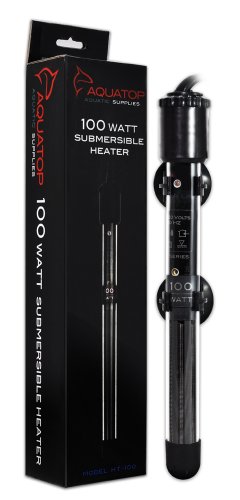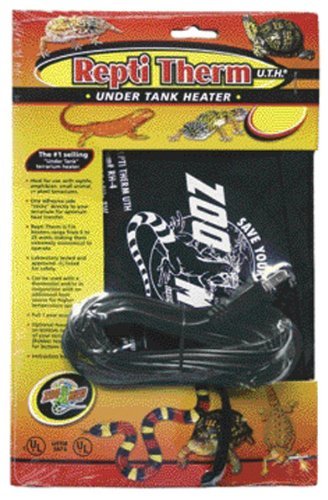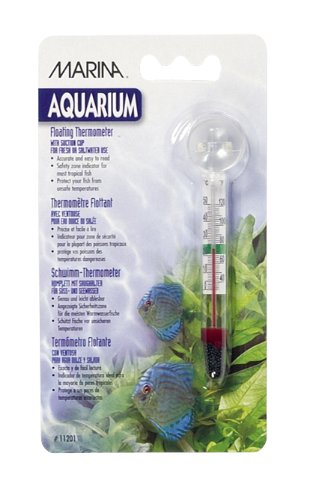
Anyone looking to set up an aquarium with fish will need to purchase an aquarium heater. Fish cannot keep up their body heat on their own. Many people think of fish as cold blooded but this is just a myth. The body temperature of fish and other aquatic animals is related to the temperature of the water. Water sitting at room temperature will generally not provide enough heat for the fish. You will have to purchase the proper aquarium heater. Keeping the water temperature at the right heat is essential in keeping fish fit and healthy. Aquarium water should be kept at a temperature that is between seventy eight and eighty degrees Fahrenheit. There are many different types of aquarium heaters on the market. They are different based on how they provide heat. Most of these heaters will contain a control that allows the heat to be adjusted to the proper temperance. Some heaters will even have a thermostat that will keep the temperature at a constant level. There are a few different options to consider when purchasing an aquatic heater.
Immersible and Submersible Heaters
Submersible heaters are placed under the water and are fully submerged into the water. Immersible heaters are not completely submerged. The controls are above the water but everything else is under the water. Generally, immersible heaters are hung at the back or side of the aquarium. Submersible and immersible aquarium heaters are cheap and are extremely effective. Since they are so cheap, many people will buy more than one heater and have one or two heaters as a backup if the first aquatic heater fails. These heaters are ugly and are hard to hide from view. Submersible heaters can be hidden easier than immersible heaters because plants can be placed over it. These heaters are usually constructed from glass, aluminum, titanium or plastic. When using these type of heaters, be aware of hot spots. If the tank has poor circulation, a hot area can occur around the heater. A tank with good water circulation should not have this problem.
 Aqueon 06107 Pro Heaters Submersible Aquarium Heater, 150-Watt
Aqueon 06107 Pro Heaters Submersible Aquarium Heater, 150-Watt AquaTop Aquarium Heater - 100W
AquaTop Aquarium Heater - 100WSubstrate Heaters
Substrate heaters are aquarium heaters that heat the water from the ground. Substrate heaters are placed below the gravel, rocks and sand or whatever else is used to line the bottom of the aquarium. This provides a far more uniform heat than the heat produced by submersible or immersible heaters. This type of aquatic heater is usually hidden from view by the gravel or rocks making it an attractive choice. Substrate heaters are great for tanks with live plants as the heat will promote the growth of the plant. They are the most popular type of heaters used in Europe. The one bad thing about substrate heaters is that it must be installed before the gravel. The installation is simple when a tank is empty and has not been filled but for aquariums that are full, it can be a difficult job as the tank will need to be emptied first.
 Zoo Med ReptiTherm® Under Tank Heater, Large
Zoo Med ReptiTherm® Under Tank Heater, LargeFilter Heaters
The newest technology when it comes to heaters is filter heaters. As you can guess, the heater is installed inside the water filter. As the water is being filtered, it is also being heated. This provides an even heat. These aquatic heaters are hidden out of site by the filter itself. Filter heaters are hard to find and can be expensive.
Wattage
After the type of heater has been chosen, you should figure out what type of wattage will be needed to heat the aquarium to the correct temperature. The general rule is that you multiply the amount of water in the tank (gallons) by five. This will give you the correct amount of watts to purchase. For example, a forty gallon tank requires a two hundred watt heater. You can divide the watts among more than one heater if the tank is large enough. For example, the two hundred watt heater needed in the forty gallon tank can be broken down into two one hundred watt heaters. If doing it this way, an immersible heater at both ends of the tank is the best option. Using more than one heater at a time will provide a backup option if one heater fails. This will allow the water temperature to stay warm enough until you can buy a new heater and install it. It can mean the difference between keeping fish alive during that time or killing them.
Monitoring the Water Temperature
Now that you have chosen an aquatic heater, you will also have to purchase a separate thermometer. The thermometer allows you to keep an eye on the water temperature. If it is too low or two high, you can make adjustments. This will also alert you to a possible heater malfunction. The temperature in an aquarium should remain at a constant temperature for the health of the fish. There are many types of thermometers on the market. Some are made of glass and float at the top of the water and others are attached to the outside of the tank. Choose a thermometer that is easy to read.
 Marina Floating Thermometer with Suction Cup
Marina Floating Thermometer with Suction CupAquarium Heaters Safety
Before handling a water heater that has been on for a while, unplug it for at least fifteen minutes before touching it and removing it from the aquarium. If you do not do this, the heater can burn you or the heater itself can crack from the sudden change in temperature. If left on when it is removed from the tank, it will overheat. When working in the tank itself, it is a good idea to turn off the aquarium heater to prevent accidentally touching it and burning yourself. Be sure to unplug it as well because water heaters can cause electric shocks if you are not careful. Take these safety tips into account and you should have no problems. Read the instruction manual that came with your heater to learn how to properly install and use it. A immersible heater should not be fully submerged and a substrate heater should not float at the top of the water. The instructions will help you avoid problems and confusion. Once installed always keep an eye on the water levels and temperature to discover any problems that might occur.
Copyright © 2005-2016 Pet Information All Rights Reserved
Contact us: www162date@outlook.com